Configure destinations for Zendesk¶
Zendesk is a service-first customer relationship management (CRM) application. Companies use Zendesk to improve customer relationships by providing support, chat, and community services that span channels.
Amperity may be configured to create or update user records in Zendesk by using the Zendesk Users API to create or update users . Use this connector to deliver a better customer support experience by pre-populating Zendesk user records with customer records from Amperity, including:
Order history
Loyalty status
Satisfaction survey results
Shopping preferences
and more
Use this data to show customer support representatives information related to product recommendations, next best actions, and likelihood of churn.
Note
Creating or updating records are rate limited to a maximum of 100 users per second.
Get details¶
Review the following details before configuring credentials for Zendesk and before configuring Amperity to send email lists to Zendesk.

|
Credential settings API token
Email address
|

|
Required configuration settings Subdomain
|

|
Required fields for Zendesk Be sure to send all fields required by Zendesk. Important Fields must exist in Zendesk and should follow a “user_fields.[field_name]” naming pattern, where “field_name” is the name of the field that is sent to Zendesk from Amperity. The name, email or external_id fields must be included. Values for states should be 2 uppercase letters only. Phone numbers should start with “+1” and contain only digits. Floating point numbers must be in DECIMAL(10,2) format. From within Zendesk verify that audience data has been loaded and is usable by all of the use cases you want to use within Zendesk to build better customer experiences. |
Configure credentials¶
Configure credentials for Zendesk before adding a destination.
An individual with access to Zendesk should use SnapPass to securely share “email address” and “API token” details with the individual who configures Amperity.
To configure credentials for Zendesk

|
From the Settings page, select the Credentials tab, and then click the Add credential button. |
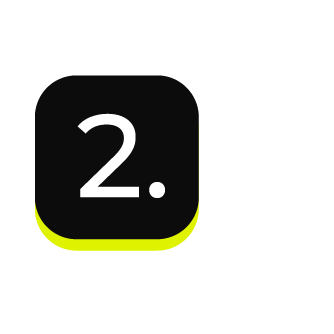
|
In the Credentials settings dialog box, do the following: From the Plugin dropdown, select Zendesk. Assign the credential a name and description that ensures other users of Amperity can recognize when to use this destination. |
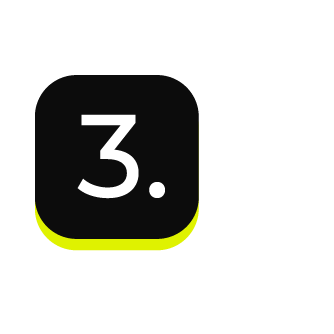
|
The settings that are available for a credential vary by credential type. For the “zendesk” credential type, configure settings, and then click Save. API token
Email address
|
Add destination¶
Use a sandbox to configure a destination for Zendesk. Before promoting your changes, send a test audience, and then verify the results in Zendesk. After verifying the end-to-end workflow, push the destination from the sandbox to production.
To add a destination for Zendesk

|
Open the Destinations page, select the New destinations button, and then select Orchestration. 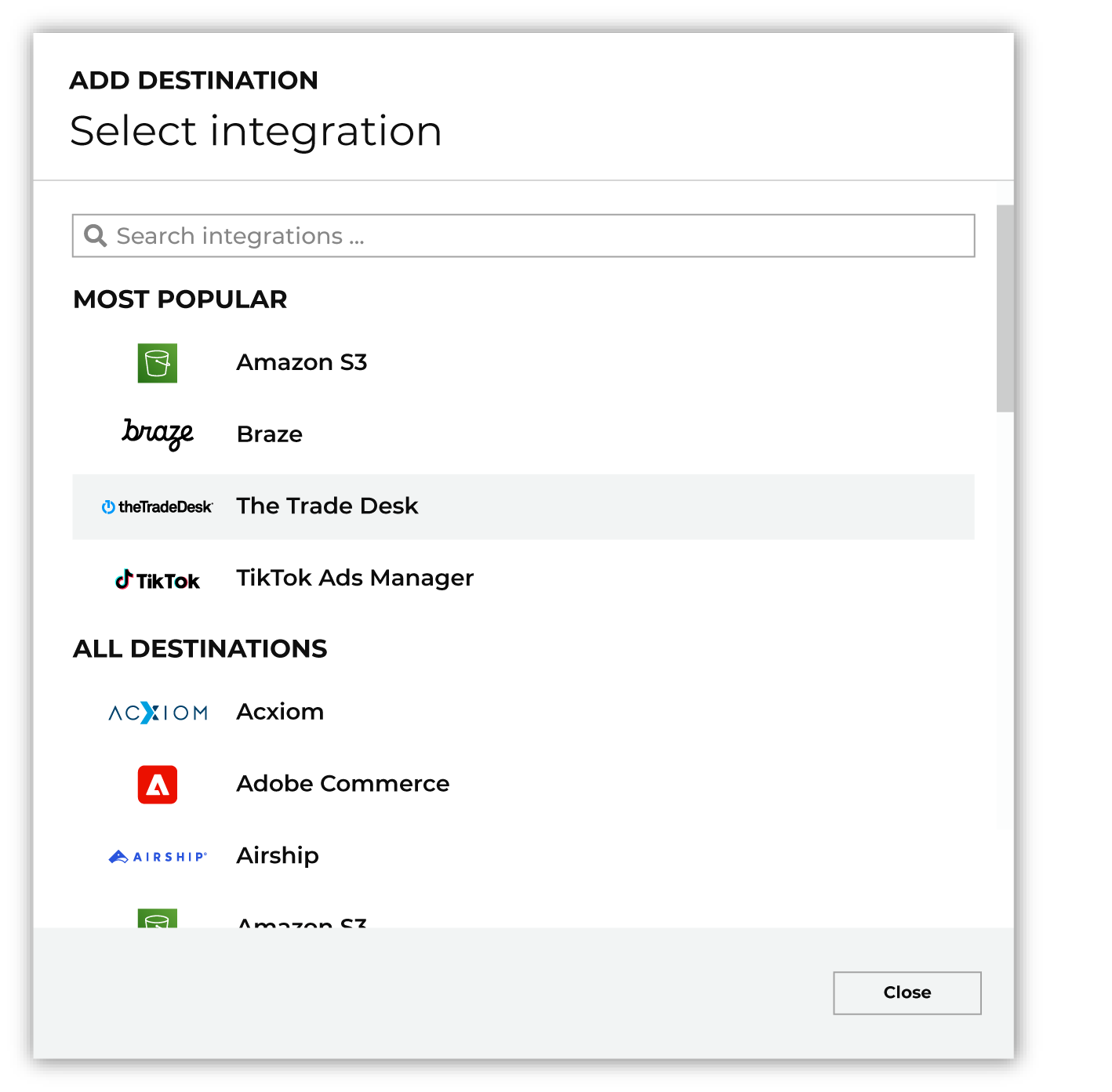
To configure a destination for Zendesk, do one of the following:
|

|
Select the credential for Zendesk from the Credential dropdown, and then click Continue. Tip If there are any issues with destination connectivity, an error message will display in the destination setup dialog. If the destination saves successfully, the connection is ready for use. |

|
In the “Destination settings” dialog box, assign the destination a name and description that ensures other users of Amperity can recognize when to use this destination. Configure business user access By default a destination is available to all users who have permission to view personally identifiable information (PII). Enable the Admin only checkbox to restrict access to only users assigned to the Datagrid Operator and Datagrid Administrator policies. Enable the PII setting checkbox to allow limited access to PII for this destination. Use the Restrict PII access policy option to prevent users from viewing data marked as PII anywhere in Amperity and from sending data to downstream workflows. |
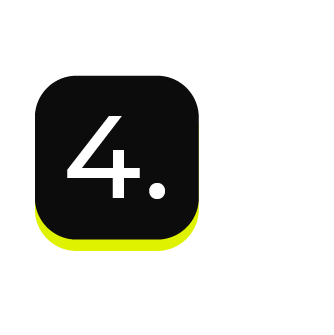
|
Configure the following settings, and then click “Save”. Subdomain
|

|
After configuring this destination users may use:
|

|
Test the connection with Zendesk by using an audience with a very small membership. For example: 10 or 100 members or the minimum audience size recommended by Zendesk. Send the test audience to Zendesk and verify the audience is correct in Zendesk. Make adjustments if necessary. Only send full audiences after validation is complete. |
Workflow actions¶
A workflow will occasionally show an error that describes what prevented a workflow from completing successfully. These first appear as alerts in the notifications pane. The alert describes the error, and then links to the Workflows tab.
Open the Workflows page to review a list of workflow actions, choose an action to resolve the workflow error, and then follow the steps that are shown.

|
You may receive a notifications error for a configured Zendesk destination. This appears as an alert in the notifications pane on the Destinations tab. 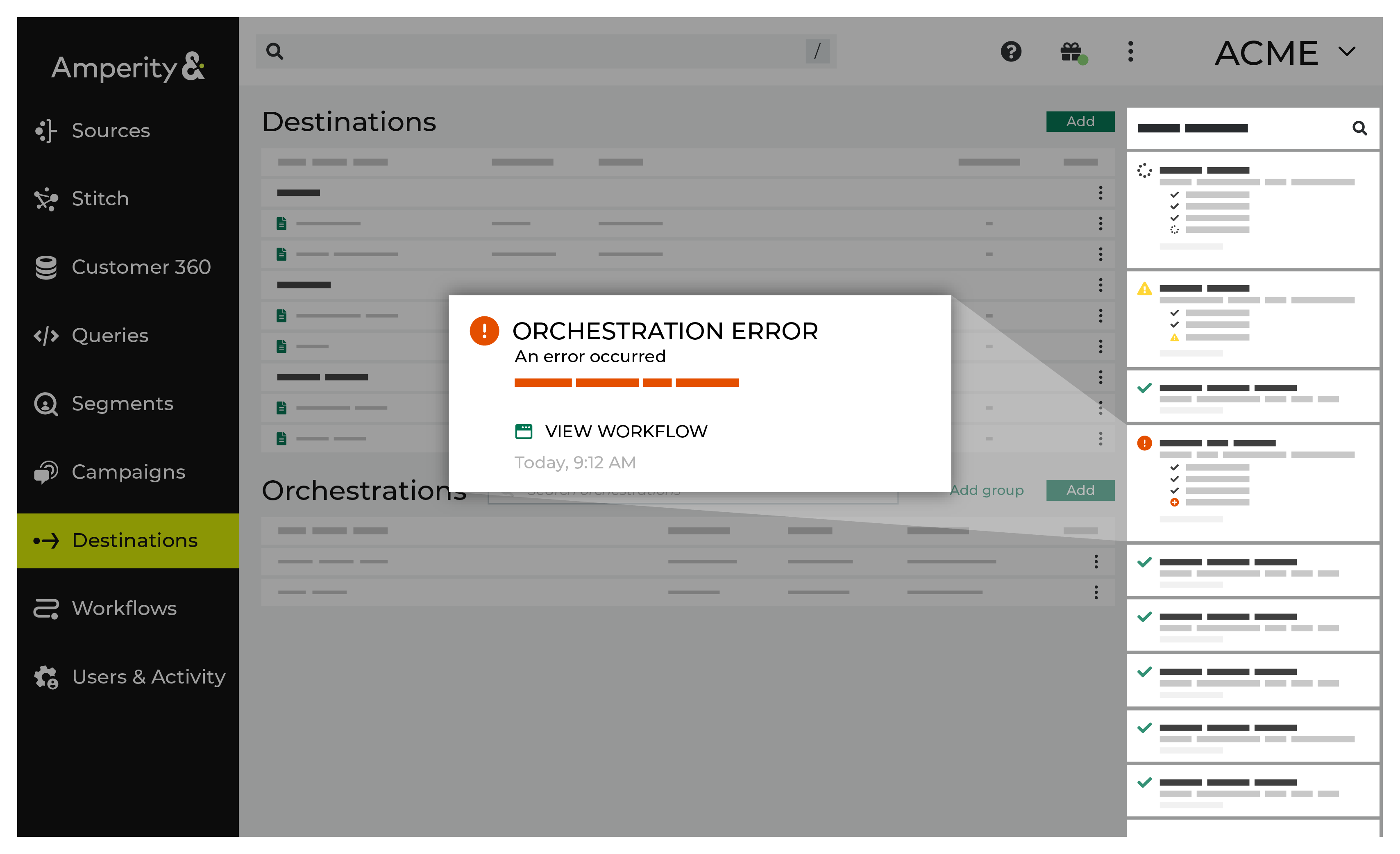
If you receive a notification error, review the details, and then click the View Workflow link to open this notification error in the Workflows page. |

|
On the Workflows page, review the individual steps to determine which steps have errors that require your attention, and then click Show Resolutions to review the list of workflow actions generated for this error. 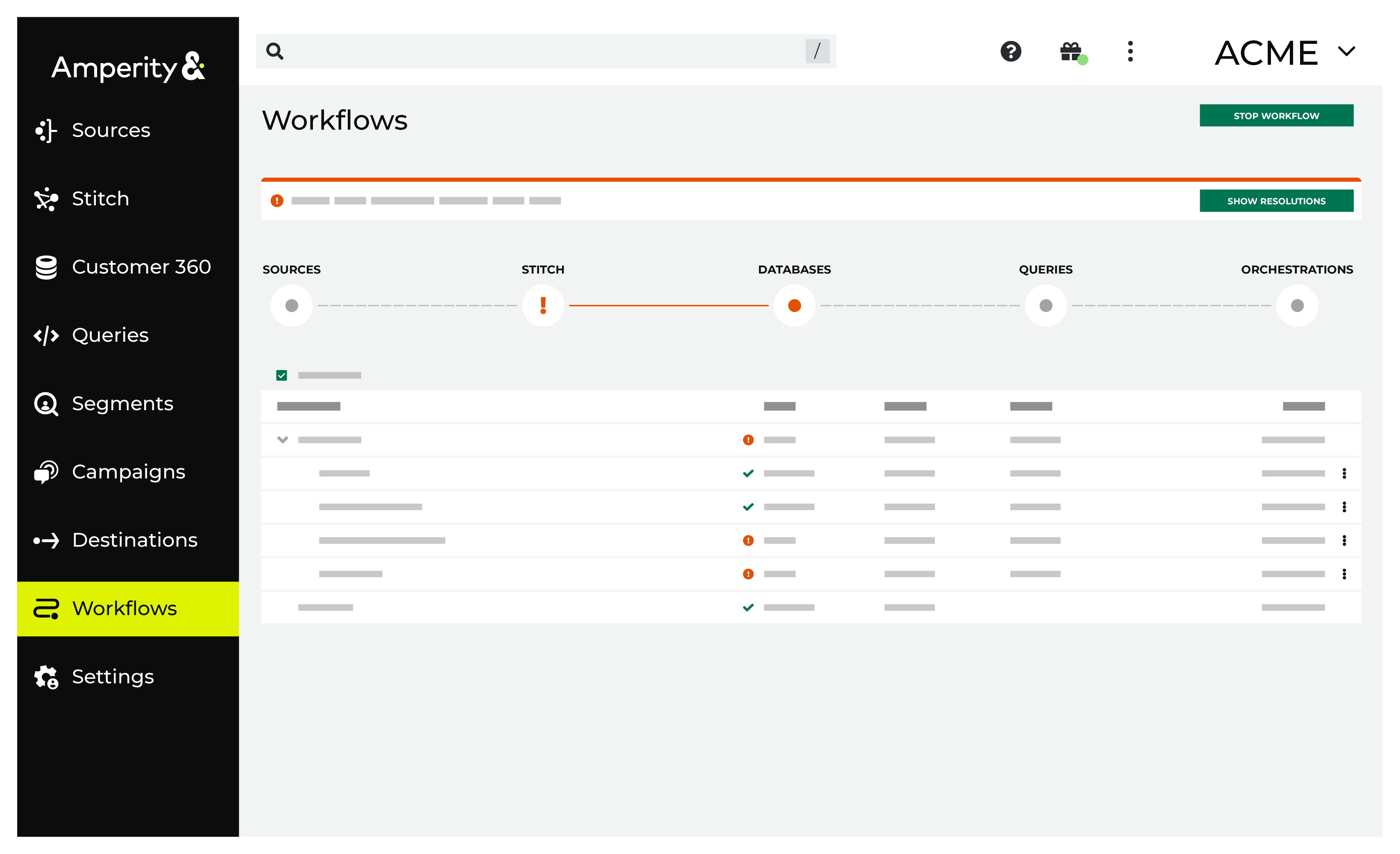
|

|
A list of individual workflow actions are shown. Review the list to identify which action you should take. 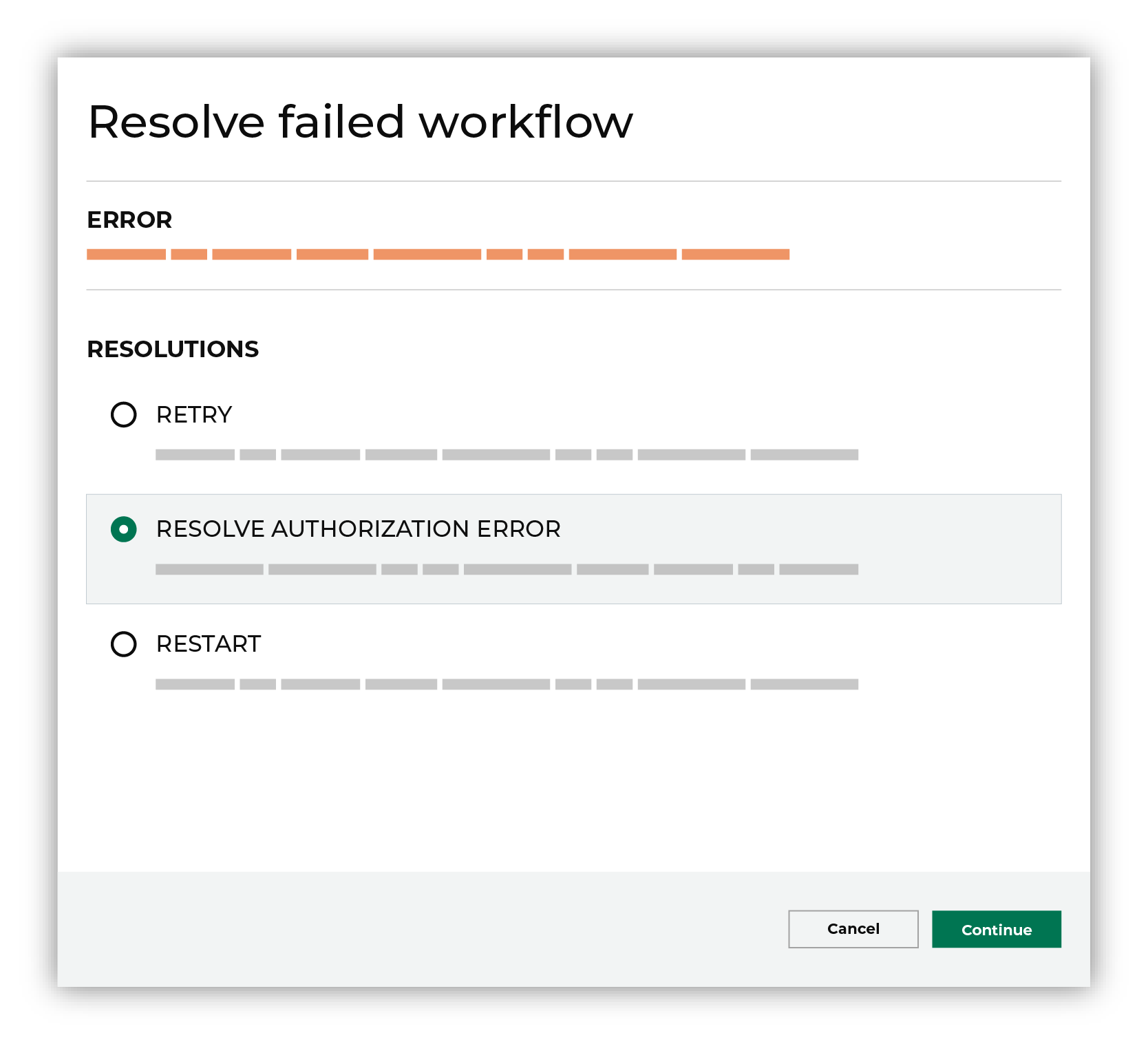
Some workflow actions are common across workflows and will often be available, such as retrying a specific task within a workflow or restarting a workflow. These types of actions can often resolve an error. In certain cases, actions are specific and are shown when certain conditions exist in your tenant. These types of actions typically must be resolved and may require steps that must be done upstream or downstream from your Amperity workflow. Amperity provides a series of workflow actions that can help resolve specific issues that may arise with Zendesk, including: |

|
Select a workflow action from the list of actions, and then review the steps for resolving that error. 
After you have completed the steps in the workflow action, click Continue to rerun the workflow. |
Invalid credentials¶
The credentials that are defined in Amperity are invalid.
To resolve this error, verify that the credentials required by this workflow are valid.
Open the Credentials page.
Review the details for the credentials used with this workflow. Update the credentials for Zendesk if required.
Return to the workflow action, and then click Resolve to retry this workflow.